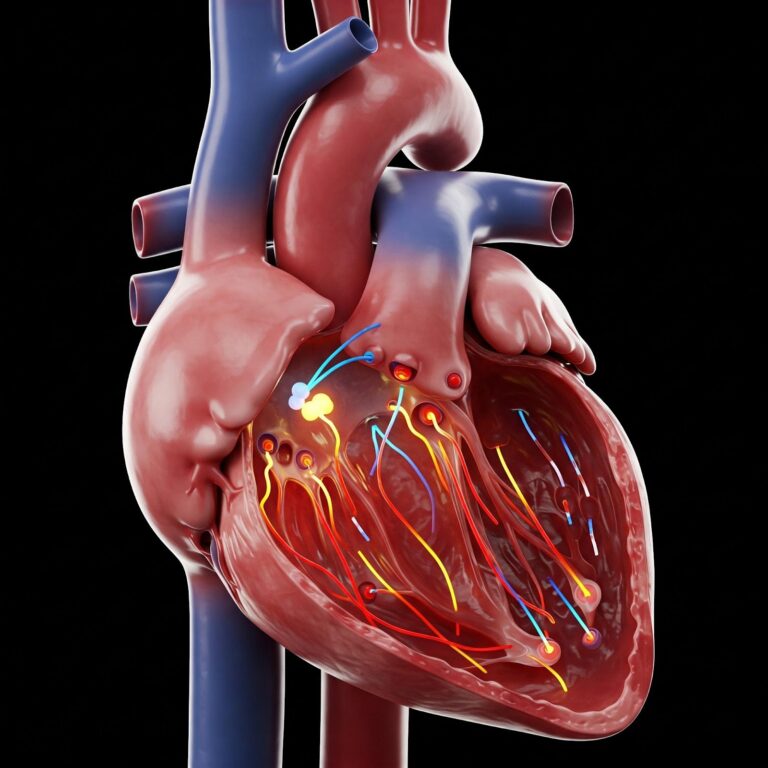Sudden cardiac death (SCD) is a major public health concern worldwide, and China has observed a notable increase in its SCD rate in recent decades. This article delves into the complex reasons behind this phenomenon, examining various contributing factors and exploring potential solutions.
Introduction
Sudden cardiac death is defined as an unexpected death due to cardiac causes that occurs within one hour of symptom onset in an apparently healthy individual. It is primarily caused by electrical disturbances in the heart, leading to a sudden loss of heart function. While SCD affects populations globally, the rate in China has raised concerns among healthcare professionals. This article seeks to investigate the multifaceted factors driving this trend.
Epidemiological Trends of SCD in China
The incidence of SCD in China has seen a marked rise, particularly in urban areas. Several studies have documented this surge, correlating it with lifestyle changes, rapid urbanization, and increasing socioeconomic pressures. Data from national health surveys indicate that cardiovascular disease, including SCD, is now a leading cause of mortality in China. The reasons for this trend require careful examination of various contributing factors.
Rapid Urbanization and Lifestyle Changes
China’s rapid economic growth and urbanization have led to significant shifts in lifestyle. These changes include:
- Dietary Changes: Increased consumption of processed foods, high-fat diets, and sugary drinks, leading to obesity and related health issues.
- Sedentary Lifestyle: A shift from physically demanding occupations to more sedentary jobs, coupled with increased screen time and reduced physical activity.
- Increased Stress Levels: The pressures of urban life, including work-related stress, financial burdens, and social competition, contribute to chronic stress.
These lifestyle changes have a direct impact on cardiovascular health, increasing the risk factors for SCD.
Prevalence of Cardiovascular Risk Factors
Several risk factors contribute to the increased rate of SCD in China. These include:
- Hypertension: High blood pressure is a major risk factor, and its prevalence is increasing in China due to dietary habits and stress.
- Diabetes: The rise in diabetes cases, largely due to poor diet and lack of exercise, contributes to heart disease and SCD.
- Smoking: Despite public health campaigns, smoking rates remain high, particularly among men.
- Dyslipidemia: Abnormal cholesterol and lipid levels increase the risk of atherosclerosis and coronary artery disease, both leading to SCD.
The intersection of these risk factors makes the Chinese population more vulnerable to sudden cardiac events.
Environmental Factors
Environmental pollution, particularly air pollution in major cities, also plays a significant role in cardiovascular health. Studies have shown a direct correlation between exposure to pollutants and increased incidence of cardiac events. Air pollution can trigger inflammation and oxidative stress, contributing to heart disease and SCD.
Genetic Predisposition
While lifestyle and environmental factors play a major role, genetic predispositions cannot be ignored. Some studies suggest that certain genetic markers might make the Chinese population more susceptible to specific types of cardiac arrhythmias and SCD. However, more research is needed to fully understand this aspect.
Healthcare Infrastructure and Accessibility
Despite advancements in healthcare, there are still significant disparities in access to quality care, particularly in rural areas. Issues include:
- Limited Access to Emergency Services: Delays in accessing emergency medical services can significantly reduce survival rates from SCD.
- Inadequate Screening and Prevention Programs: Lack of widespread screening programs for cardiovascular risk factors and preventive interventions.
- Shortage of Trained Medical Professionals: Especially in rural areas, leading to delayed or inadequate treatment.
These infrastructural challenges contribute to the higher rate of SCD.
Aging Population
China’s aging population is another crucial factor. Older individuals are at a higher risk of cardiovascular disease and SCD. As the population ages, the prevalence of these conditions is likely to increase, further elevating the SCD rate.
Psychological Factors
Mental health and psychological factors are increasingly recognized as important determinants of cardiovascular health. High levels of stress, anxiety, and depression have been linked to increased risk of cardiac events. The psychosocial pressures in rapidly developing urban areas contribute to this issue.
Lack of Public Awareness and Education
A lack of awareness regarding cardiovascular health and SCD prevention among the general public is a major concern. This includes limited knowledge about:
- Warning Signs of Heart Issues: Many people do not recognize early warning signs, leading to delays in seeking medical help.
- Importance of Regular Check-ups: Underutilization of preventive health services and screenings.
- Lifestyle Modifications: Lack of knowledge about the impact of diet, exercise, and stress management on heart health.
Public health education campaigns are crucial to address these gaps.
Comparison with Other Countries
Comparing China’s SCD rate with other countries provides valuable insights. While many developed nations have also seen increases in cardiovascular disease, China’s rapid rise is distinct. Factors such as differing healthcare systems, lifestyle variations, and environmental issues need to be considered in this comparison.
Potential Solutions and Interventions
Addressing the issue of SCD in China requires a comprehensive and multifaceted approach. Possible interventions include:
- Strengthening Public Health Infrastructure: Improving emergency medical services, increasing access to healthcare in rural areas, and investing in preventive programs.
- Promoting Healthy Lifestyles: Public campaigns to encourage healthy diets, regular exercise, and stress management.
- Improving Environmental Regulations: Measures to reduce air pollution and improve environmental quality.
- Enhancing Healthcare Provider Training: Ensuring medical professionals are trained to recognize and manage cardiovascular risks effectively.
- Conducting More Research: Further studies to understand the genetic and environmental factors contributing to SCD in the Chinese population.
Conclusion
The high rate of sudden cardiac death in China is a complex issue influenced by a combination of lifestyle changes, environmental factors, genetic predispositions, and healthcare infrastructure challenges.
Addressing this issue requires a holistic approach involving public health initiatives, healthcare improvements, environmental regulations, and increased public awareness. By implementing effective strategies and investing in preventive measures, it is possible to reduce the burden of SCD and improve cardiovascular health in China.
Author: Donna Ryan lives and works in Tucson, AZ.





